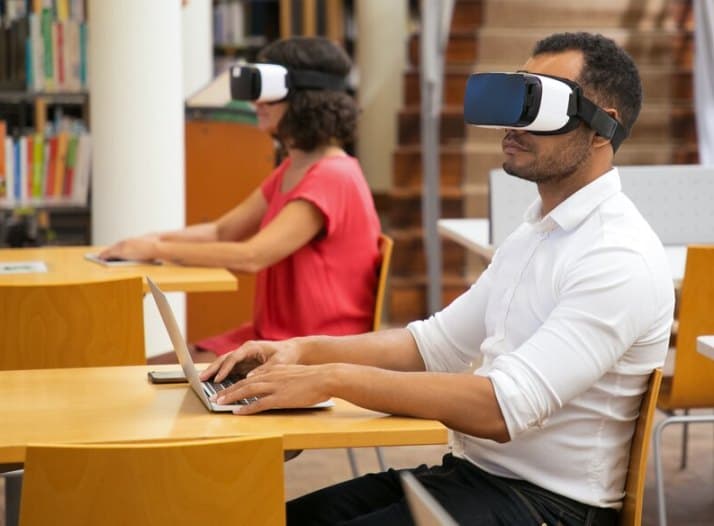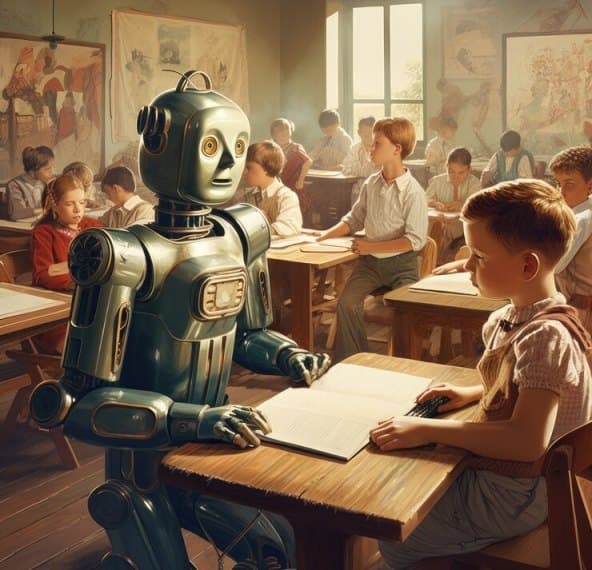The educational environment is ever-changing in today’s fast-paced society. With advancements in technology and changing societal needs, traditional face-to-face teaching is no longer the only way to convey knowledge. Rather, educators and students are investigating substitute methods that provide adaptability, ease of use, and improved educational opportunities.
We explore different teaching approaches, looking at their advantages and how they are changing the face of education.
Embracing Online Learning Platforms
One prominent alternative to traditional face-to-face teaching is online learning platforms. These platforms leverage digital technologies to deliver educational content remotely, breaking down geographical barriers and providing access to a vast array of courses and resources.
Whether you’re looking to enhance your professional skills or explore into a new field altogether, the online platform offers countless course options from reputable institutions worldwide. From programming and design to marketing and business management, you can find the perfect course that aligns with your aspirations.
Through online learning, students can engage in self-paced learning, access multimedia materials, participate in interactive exercises, and collaborate with peers and instructors from around the globe.
This flexibility allows learners to tailor their educational experience to suit their individual needs and schedules, making learning more accessible and convenient than ever before.
Harnessing the Power of Virtual Classrooms
Virtual classrooms have emerged as a popular alternative to traditional face-to-face teaching, especially in recent times when remote learning has become essential. These digital platforms provide an effective means of delivering educational content and interaction with students from anywhere in the world.
Virtual classrooms offer an interactive learning environment, where students can actively participate in engaging activities such as virtual simulations, quizzes, and discussions. The use of multimedia tools, such as videos, interactive whiteboards, and educational games, enhances the learning experience and captures students’ attention effectively.
Through virtual classrooms, students and teachers can engage in real-time collaboration, promoting seamless exchange of information and ideas. The live chat feature enables instant communication between participants, fostering a sense of community and enabling immediate feedback on coursework and questions.
Leveraging Blended Learning Models
Blended learning models combine elements of traditional face-to-face instruction with online learning components, offering a hybrid approach that maximizes the benefits of both modalities.
In a blended learning environment, students have the opportunity to engage in in-person interactions with instructors and peers while also accessing digital resources and completing online activities. This blended approach allows for personalized learning experiences, catering to the individual needs and preferences of students while promoting collaboration, critical thinking, and technological literacy.
Read Also: Hybrid Learning Vs Blended Learning
Exploring Interactive Multimedia Resources
The integration of interactive multimedia resources represents another avenue for enhancing the teaching and learning experience. These resources, which can include videos, simulations, virtual labs, and interactive tutorials, provide dynamic and engaging content that appeals to diverse learning styles.
By incorporating multimedia elements into their instruction, educators can capture students’ attention, facilitate comprehension, and reinforce key concepts in ways that traditional methods cannot.
Moreover, interactive multimedia resources offer opportunities for self-paced learning and exploration, empowering students to take ownership of their educational journey and delve deeper into subjects of interest.
Emphasizing Personalized Learning
Personalized learning approaches recognize that every student is unique and has distinct learning needs, interests, and abilities. Teachers are able to maximize learning outcomes and promote a better comprehension of the subject matter by customizing lessons for each student.
Adaptive learning technologies, data analytics, and artificial intelligence are increasingly being utilized to create personalized learning experiences that adapt to students’ progress, preferences, and areas of difficulty.
This personalized approach not only enhances engagement and motivation but also promotes mastery of content and the development of critical thinking and problem-solving skills.
Gamification
Gamification is a teaching approach that incorporates game design aspects into traditional in-person instruction to make learning more dynamic and entertaining for students.
By implementing game mechanics, such as point systems, levels, and rewards, educators can create a motivating and immersive learning environment that captures students’ attention and maximizes their retention of course material.
Through gamification, students are immersed in an engaging learning experience that simulates real-life scenarios and challenges, enabling them to apply their knowledge in a practical context. This not only makes learning fun and enjoyable but also fosters critical thinking, problem-solving skills, and creativity. Students then take an active role in their education, which enhances their performance and gives them a better comprehension of the material.
Gamification employs a reward-based system to acknowledge and incentivize students for their progress and achievements. By earning points, badges, or unlocking virtual rewards, students feel a sense of accomplishment, boosting their motivation to continue learning and mastering new skills. This positive reinforcement not only encourages continuous engagement but also instills a growth mindset, promoting a culture of persistence and resilience in the face of challenges.
Conclusion
As the educational landscape continues to evolve, it is essential to explore alternative methods to traditional face-to-face teaching that offer flexibility, accessibility, and enhanced learning experiences.
From online learning platforms and virtual classrooms to blended learning models and interactive multimedia resources, there are numerous avenues for educators and learners to embrace innovation and adapt to the changing needs of the 21st-century learner.
By harnessing the power of technology and embracing personalized learning approaches, we can empower students to reach their full potential and thrive in an ever-changing world of education.




